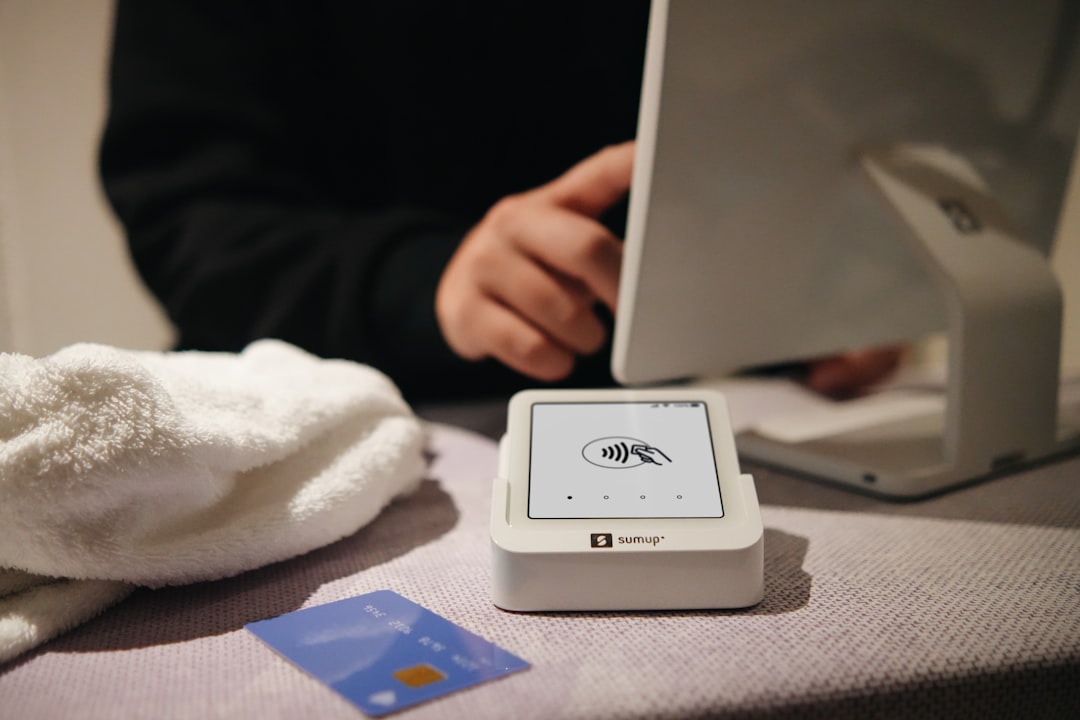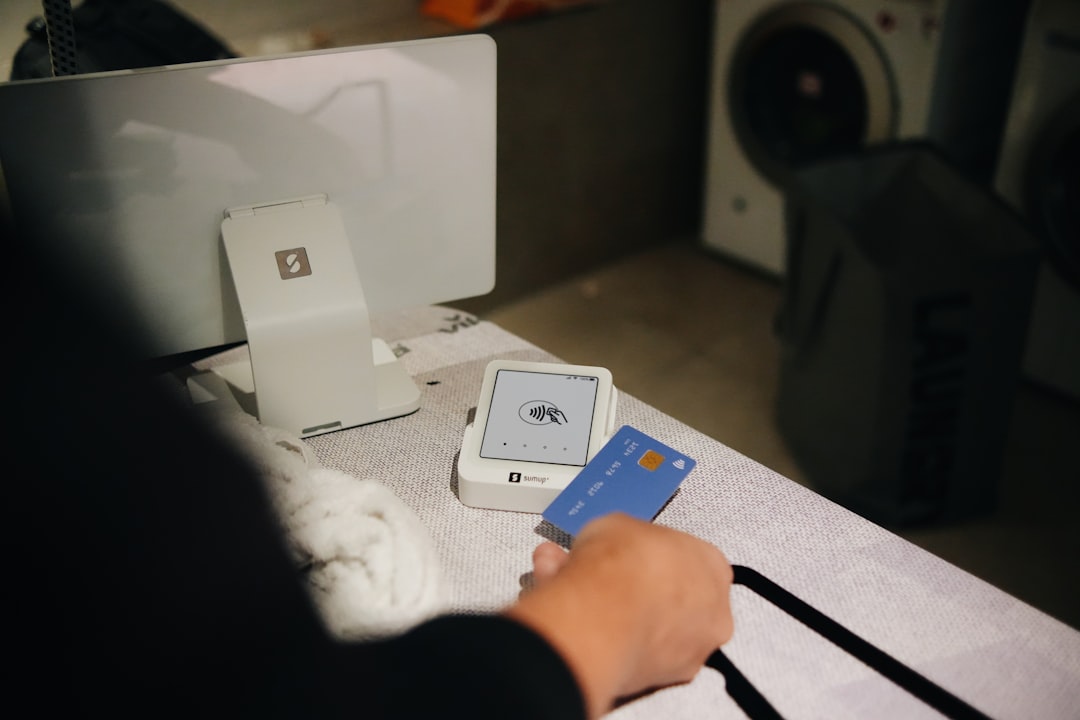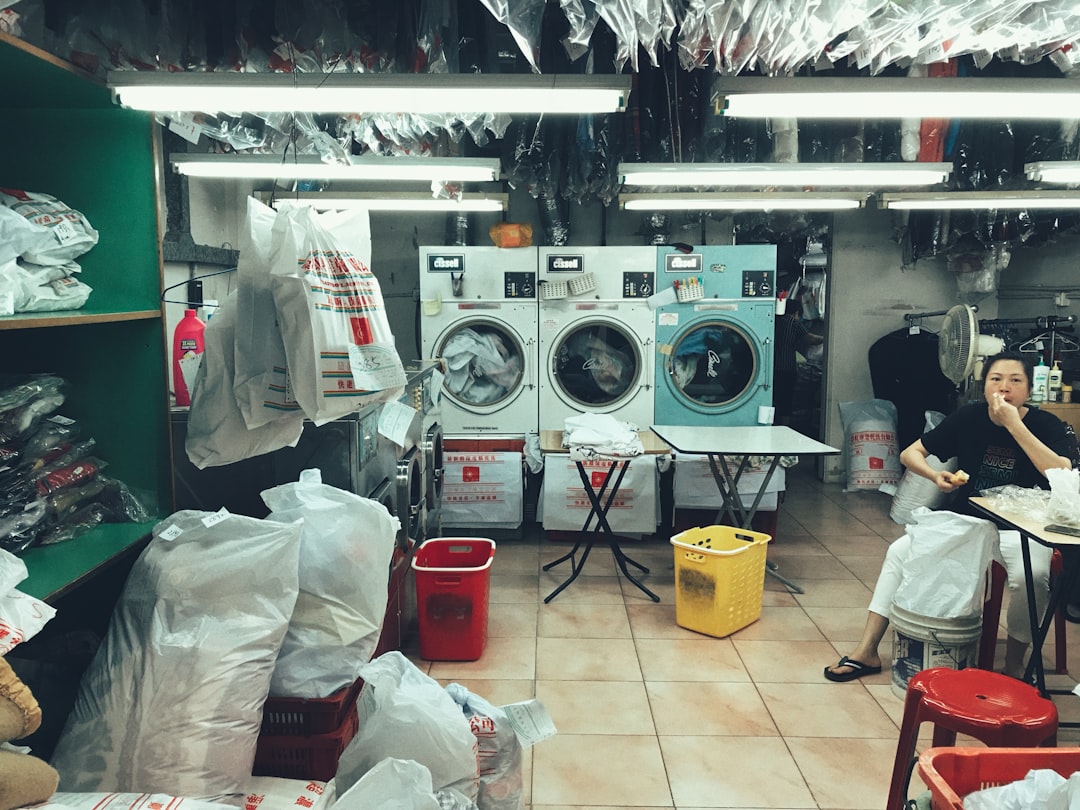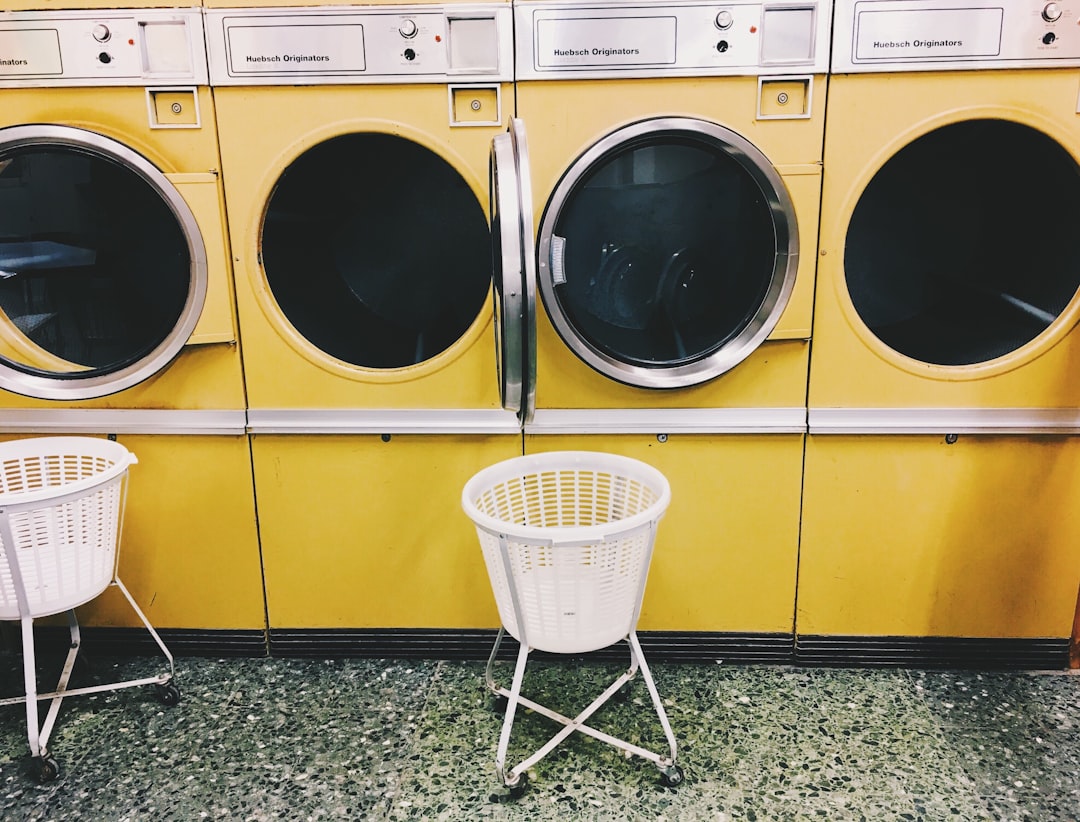

Engage prospects with a scan and streamline customer engagement with FREE QR code marketing tools by Sona – no strings attached!
Create a Free QR CodeFree consultation

No commitment

Engage prospects with a scan and streamline customer engagement with FREE QR code marketing tools by Sona – no strings attached!
Create a Free QR CodeFree consultation

No commitment
Self-service laundromats have historically depended on in-person visits and word of mouth to grow their business, but today’s customers expect convenience, digital engagement, and seamless service experiences. As the industry navigates economic shifts, evolving safety standards, and growing demand for eco-friendly practices, operators are seeking new ways to stand out and cultivate customer loyalty. Many still run on analog processes such as paper punch cards, printed instructions, and static window posters, which makes it hard to measure interest, personalize offers, or react quickly when behavior changes.
QR codes have rapidly emerged as a strategic lever for modernizing laundromat marketing and operations, serving as the bridge between offline environments and digital conversion funnels. With a single scan, customers can register for loyalty, pay, submit maintenance requests, watch a short how-to video, or claim a detergent discount. Operators benefit from measurable engagement, faster resolution of issues, and data they can use to retarget high-intent visitors who would otherwise remain anonymous.
Whether you want to improve customer experience, streamline maintenance, or boost retention, QR code solutions help laundromats capture engagement signals and build audience insights that support both immediate sales and long-term growth. This guide explains how to deploy QR codes tactically across a self-service laundromat to drive conversions, reduce friction, and future-proof your operations in an increasingly digital world.

Many laundromats miss out on repeat visits because shoppers come and go without leaving a trace. A person might scan the machine instructions with their eyes, not their phone, and leave after the cycle ends without registering for loyalty, signing up for offers, or submitting feedback. Paper-based customer forms, printed coupons, and instruction sheets create friction. Staff do not always have time to hand out flyers or explain upsell options during peak hours. QR codes solve this issue by replacing passive displays with interactive touchpoints that convert moments of interest into measurable actions.
To drive conversions, modern operators deploy QR codes with clear goals and trackable outcomes. Start by identifying the analog tasks that slow customers down or obscure intent, such as manual loyalty sign-ups, coin-only payment bottlenecks, or unreported machine issues. Replace each one with a QR action that removes clicks and clarifies the next step, like a scan-to-join referral program, scan-to-pay portal, or scan-to-report maintenance form. The key is to place each QR code in a high-intent context and pair it with a benefit-driven call to action.
Define a set of metrics that reflect conversion, not just activity. Scan volume is useful, but what you want is a chain of outcomes: scan to form submission, scan to payment, scan to loyalty enrollment, scan to review, and scan to repeat visit. If a QR code next to the folding table drives detergent upsells or membership upgrades, you will see it in the funnel data. If a QR code at the change machine attracts first-time visitors after hours, you can retarget them with a welcome discount and directions for next time.
As you scale, a platform like Sona QR helps centralize code management, update destinations without reprinting, and sync scan events into your CRM or marketing tools. That means you can test new copy, rotate promotions, and compare placements across locations. If a printed brochure never told you who engaged, a QR-enabled sign will. If a manual sign-up sheet got lost or incomplete, a scan-to-join form will capture clean data that triggers automated onboarding.

Self-service laundromats are classic offline businesses with limited information about customer behavior. People walk in, use machines, and leave. Unless they pay digitally or talk to staff, operators gain little insight into who they are, what they value, or why they might churn. QR codes matter because they convert anonymous, momentary interest into actionable data that fuels smarter marketing and better operations. A scan connects the physical environment to a measurable digital journey.
Another reason QR codes matter is the agility they give operators. Static materials become dynamic assets. You can change the destination behind a QR code as often as needed, without reprinting window posters or machine decals. Promote a summer drying bundle this month, then pivot that same code to an eco-friendly detergent trial next month. Measure which promotion drives loyalty sign-ups versus one-time redemptions. Optimize the experience once you see how your customers respond.
For laundromats, common materials like counter signs, machine labels, receipts, and in-window posters become gateways to action with QR codes. That shift transforms a low-data environment into a trackable funnel with clear attribution and repeatable, data-driven improvements.

While QR codes all look similar, the destination and experience can vary widely. Choosing the right format ensures you are asking for the right action in the right moment. In a laundromat, convenience and speed are paramount. People have limited time and often one free hand. Design your QR flow to respect that context and reduce steps.
Dynamic QR codes are particularly valuable for laundromats. You can update the link behind the code seasonally or even weekly. This flexibility ensures your print assets do not go stale and your offers remain aligned with foot traffic patterns. For example, a code labeled Scan for today’s special can always route to the latest promotion, tutorial, or service update.
Match the format to the task. A web link works best for loyalty onboarding or promotions. A form simplifies maintenance reporting. SMS pre-fill is ideal for urgent issues in a low-signal basement. Wi-Fi QR codes welcome people onto your network, which becomes another touchpoint for engagement. For forms, see this Google Forms guide to structure quick, scannable workflows.

Placing QR codes in the right places unlocks measurable growth from touchpoints you already own. The best opportunities are high-intent moments where customers are attentive, idle, or looking for help. Map your customer journey from curb to cycle to fold. Each stage has natural opportunities to educate, convert, and retain.
Start with a quick audit. Walk your store as a first-time visitor would. Where would you want instructions or an easy way to pay? Where would you look for support if a machine stalls mid-cycle? Where would you be open to learning about a discount or add-on service? Your answers will guide placement.
Each placement should align with a specific behavior. Ask yourself what action you want at that moment. Then write the call to action clearly. When every scan has a purpose, you will see a clear lift in conversions and valuable signals you can use for retargeting.
QR codes excel when they solve a specific problem faster than the status quo. Choose use cases that remove friction, create value, and generate trackable outcomes. The following examples are proven to increase measurable engagement and revenue in self-service laundromats.
These use cases tackle perennial pain points such as low loyalty uptake, unreported issues, and missed upsell moments. They also create a consistent data trail that connects in-store behavior to post-visit engagement. That means you can improve the customer experience while unlocking new revenue through targeted offers and reminders.
Each scan is a high-intent signal. By deploying multiple QR codes across your location and marketing media, you can segment audiences based on what they scanned, where they scanned, and when they scanned. Those segments power precise follow-up campaigns that speak to the customer’s context.
For laundromats, useful audience distinctions include proximity and lifestyle. Students, nearby apartment residents, and hotel guests behave differently. Weekday daytime visitors often differ from late-night weekend users. Eco-conscious shoppers respond best to sustainable product bundles and off-peak energy discounts. Use segmentation to match offers to real needs.
With Sona QR, each code can be tied to a campaign, location, and intent tag. Scans flow into centralized analytics and your CRM with attributes such as source, device, and timestamp. That foundation lets you automate follow-ups and build retargeting audiences based on real behavior instead of assumptions.
QR codes function as connective tissue across your offline and online channels. They convert static media into interactive funnels and give you the data to optimize spend. See Sona’s offline attribution guide for ways to measure impact across print and in-store placements. For laundromats, this means your windows, flyers, receipts, and even laundry bags become measurable acquisition and retention assets.
Start by mapping your existing channels. If you already run direct mail to nearby apartments, add a QR code with a unique offer for that building. If you advertise on community boards or in the local gym, add a scan-to-save code that tags those scanners as high-proximity prospects. Use consistent visuals and copy so people recognize your brand from the street to the dryer.
QR codes are the offline onramp to your digital marketing engine. With a centralized platform like Sona QR, you can manage all codes, monitor performance across channels, and sync scan data with your CRM and ad platforms so every campaign builds on the last.
Start by defining the most valuable action you want more customers to take. Common goals for laundromats include loyalty enrollment, mobile payment adoption, referral growth, and faster maintenance reporting. Select one or two high-impact outcomes so your first campaign is focused and measurable.
Choose the technical format that aligns with your goal. Use dynamic QR codes for any destination you may want to edit or track. Reserve static codes for permanent pages like a PDF of your store rules that rarely change.
Your code should be scannable at a glance and visually connected to your brand with custom QR codes. Pair it with a benefit-driven call to action that removes ambiguity. Test thoroughly in real conditions to avoid lost conversions.
Roll out your codes where customers are most likely to act. Start with storefront windows, machine interfaces, and folding tables. Expand to receipts, detergent displays, and community flyers once the first wave performs.
Monitor performance daily during launch, then weekly. Look beyond scans to downstream behaviors such as sign-ups, payments, and reviews. Use the insights to refine placements, offers, and creative.
The value of QR codes increases when you measure outcomes, not just interactions. Traditional signage is a guessing game. With QR analytics, you can see which placements and offers create revenue and which need adjustment. You can also tie scans to loyalty enrollments, payments, maintenance resolutions, and repeat visits.
A platform such as Sona QR and Sona brings end-to-end visibility. Sona QR captures scan events with attributes like time, device, and location. Sona.com enriches and connects those events to your CRM, identity graphs, and attribution models so you can see how QR engagement contributes to pipeline and closed revenue. This closes the loop between offline engagement and digital conversion.
When your analytics illuminate the path from scan to revenue, QR codes become a performance channel. You can defend budget, replicate what works, and phase out what does not with confidence.
Once your core use cases are running, expand your QR footprint to capture more signals and improve customer experience. Focus on clarity, speed, and follow-up. Help people understand why to scan and what they receive in return. Then automate the next step so momentum does not stall.
Consider creative placements that fit the laundromat context. For example, include a scan-to-reorder code on branded laundry bags or detergent refill bottles. Add a scan-to-book pickup code on invoices if you also offer wash and fold. The more your codes align with real tasks, the higher your scan and conversion rates will be.
Start creating QR codes for free. Create codes in minutes, instrument them with UTMs, and start measuring which surfaces in your store drive the most conversions.

Operators across different markets are using QR codes to solve practical problems while building measurable funnels. The common thread is a focus on speed, clarity, and follow-up. The examples below demonstrate how small changes in signage and process can create outsized gains. See the Wash&Relax case study for inspiration.
These examples highlight how QR engagement tightens operational tracking and reduces wasted promotional spend. When every code is tied to a goal and a follow-up workflow, your signage becomes a performance asset rather than a static reminder.
The difference between a high-performing QR program and a lackluster one often comes down to fundamentals. Place codes in high-intent zones, write clear CTAs, and make the destination mobile-first. Keep campaigns fresh by rotating offers and content behind dynamic codes. Train staff to promote scanning at key moments such as a first visit or a payment issue.
Avoid pitfalls related to design and context. Codes that are too small, low contrast, or hidden behind reflective protective covers will not scan reliably. Calls to action that do not state the benefit reduce motivation. Sending scanners to a desktop-oriented page will cause abandonment. Regularly test your codes on site and during different times of day to ensure reliability.
Learning from peers helps you skip early missteps and accelerate impact. Build small pilots, measure, and scale the winners with disciplined iteration.
QR codes empower self-service laundromats to deliver modern, measurable customer engagement at every physical touchpoint. By leveraging smart QR code strategies rooted in operational efficiency and real-time analytics, laundromat operators turn pain points such as unknown visitors, missed follow-ups, and incomplete targeting into growth opportunities. The result is an experience that is easier for customers and more insightful for operators.
Use dynamic QR codes to turn windows, machines, and receipts into performance media. Instrument each placement with UTMs, capture scans in your CRM, and trigger follow-ups automatically. Pair simplified actions like scan-to-pay and scan-to-join with compelling offers. Rotate content to stay relevant. When every touchpoint has a purpose and a measurement plan, conversions become repeatable.
With Sona QR, you can generate codes, manage destinations, and analyze performance from a single dashboard. With Sona, you can connect scans to revenue through identity resolution and multi-touch attribution. Start by launching one or two high-impact use cases, then expand across your store as results compound. In a category where convenience is king, QR codes are a practical, data-rich way to deliver it while building a durable growth engine.
QR codes have revolutionized self-service laundromats by transforming simple visits into interactive, conversion-driving experiences. From streamlining customer onboarding and enabling seamless payments to delivering personalized promotions and real-time updates, QR codes empower laundromats to attract new users, enhance satisfaction, and boost repeat business—all measurable and actionable. Imagine instantly knowing which machines or offers engage customers most, then optimizing your marketing on the fly for maximum impact.
With Sona QR, creating dynamic, trackable QR codes tailored to your laundromat’s needs is effortless. Update campaigns anytime without reprinting materials, analyze scan data down to each customer interaction, and directly link QR engagement to increased revenue. No guesswork—just clear insights and smarter growth.
Start for free with Sona QR today and turn every spin cycle into a valuable customer connection and conversion opportunity.
QR codes provide convenient, interactive touchpoints that allow customers to join loyalty programs, pay digitally, access how-to videos, and submit maintenance requests, making the experience faster and more seamless.
Effective strategies include deploying QR codes with clear calls to action in high-intent locations, using dynamic codes to rotate promotions, leveraging referral programs, and integrating QR campaigns across print, digital, and community channels.
By using QR codes to capture engagement data, segment customers by behavior and location, trigger personalized follow-ups, and offer loyalty rewards, laundromats can build deeper relationships and encourage repeat visits.
Innovative methods include scan-to-pay on machines, scan-to-join loyalty programs at folding tables, scan-to-report maintenance forms on machines, eco-friendly product education near vending areas, and scan-to-review prompts on receipts.
Laundromats can use QR codes to convert physical signage into measurable digital funnels, track customer interactions, run targeted promotions, automate follow-ups through CRM integration, and optimize placements based on real-time analytics.
Use Sona QR's trackable codes to improve customer acquisition and engagement today.
Create Your FREE Trackable QR Code in SecondsJoin results-focused teams combining Sona Platform automation with advanced Google Ads strategies to scale lead generation

Connect your existing CRM

Free Account Enrichment

No setup fees
No commitment required

Free consultation

Get a custom Google Ads roadmap for your business






Launch campaigns that generate qualified leads in 30 days or less.
